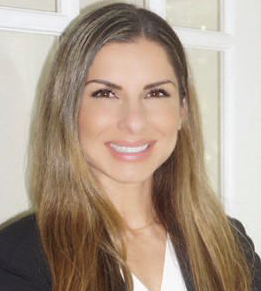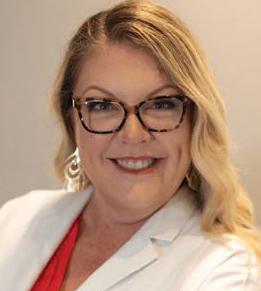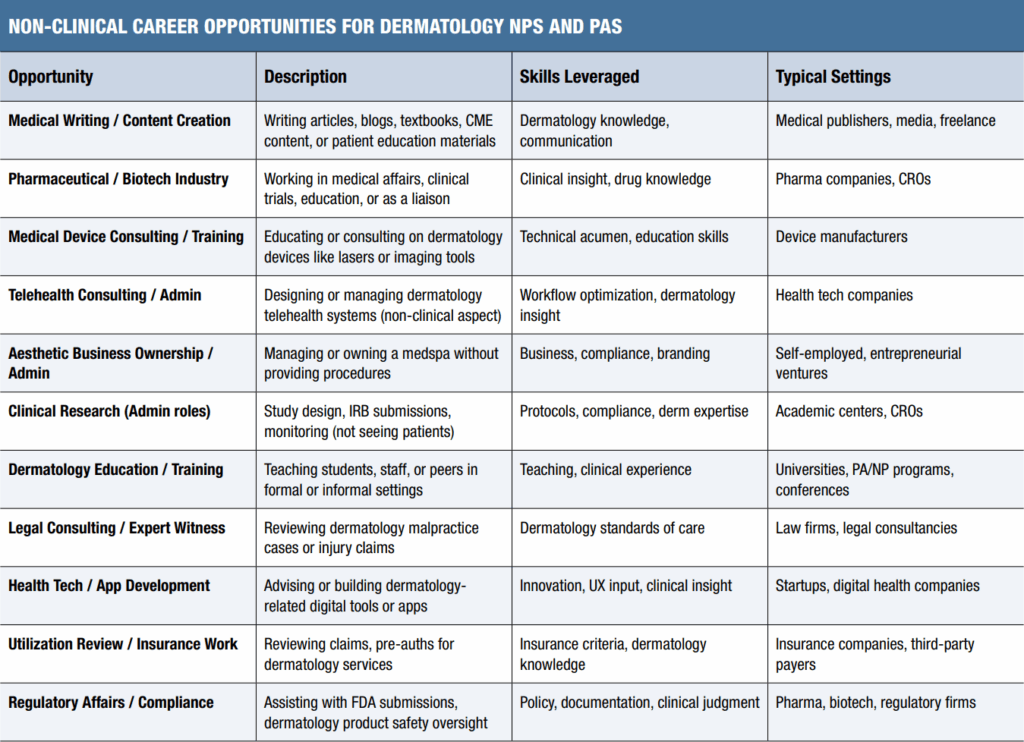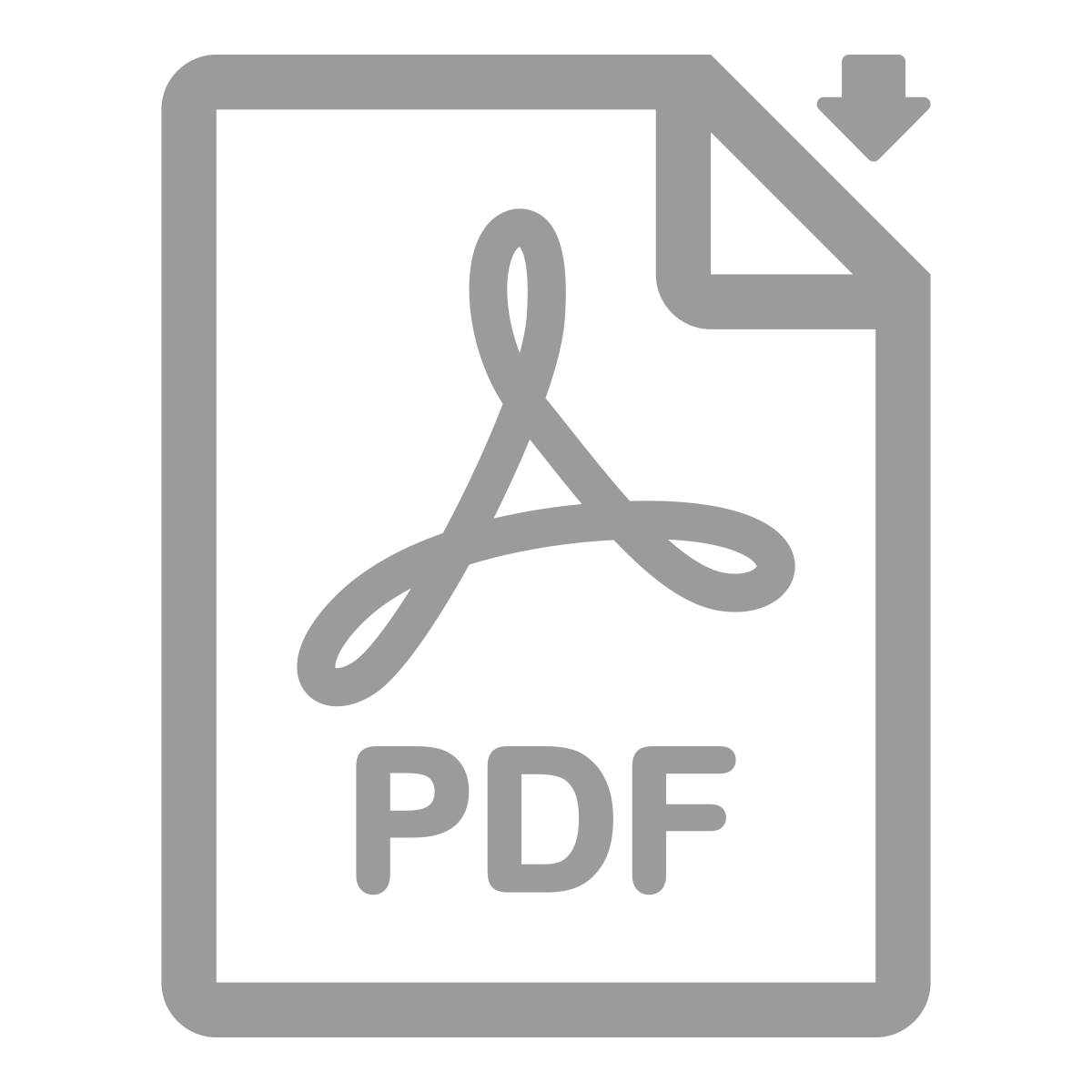By Patricia M. Delgado, DNP, AGPCNP, DCNP, PMHNP
Featuring insights from Lindita Vinca, DNP, APRN; Stephanie Simmerman, DNP, APRN-C; Shanna M. Miranti, PA-C; and Aaron Sookhoo, MMS, PA-C
All healthcare providers have an origin story that describes the turning point when they wanted to enter the field of medicine. As advanced practice providers (APPs), we usually have a moment, an interaction, or a personal experience with a physician assistant (PA) or nurse practitioner (NP) that specifically touches our lives and helps guide our career trajectory.
We go to school, we get our degrees, and we begin working and usually loving our jobs as Dermatology APPs. We work day-in and day-out, helping patients with their dermatological, aesthetic, and/or surgical needs and concerns. The role is deeply personal and purpose-driven, rooted in listening to, educating, and advocating for patients.
As rewarding as it is, this clinical work is not always the endpoint.
There is often a natural progression toward broader professional contributions, whether it be through medical education, research, industry collaboration, public speaking, or publishing. These pursuits serve as avenues for growth and mechanisms to preserve the integrity of patient care in a shifting healthcare landscape.
Over the past decade, the dermatology field has experienced a sharp transition toward consolidation and scale. We are seeing an influx of private equity (PE) groups acquiring practices and changing the bottom line from positive patient outcomes to volume seen and dollars made. From 2012 to 2017, PE acquisitions of dermatology practices rose at an average annual rate of 65%.1 According to PitchBook data,2 there were approximately 134 PE transactions in dermatology between 2020 and 2022, and nearly 85 acquisitions occurred in 2023 alone, totaling over 200 acquisitions in this period. As of 2024, there are over 35 active PE-backed dermatology platforms operating across nearly 20 states.3
This wave of consolidation has led to growing concerns about the potential downstream effects on patient care. Several studies have linked PE ownership in healthcare to increased healthcare costs, higher rates of unnecessary procedures, and reduced quality of care.4,5 These experiences reflect a broader trend in which business metrics such as volume and reimbursement begin to eclipse the core mission of patient-centered care. This reality underscores the importance of APPs expanding their roles beyond direct patient care. By engaging in scholarship, thought leadership, and strategic partnerships, APPs not only strengthen their own professional autonomy but also contribute to shaping policy, standards, and culture in healthcare. These platforms elevate the credibility of APPs and provide the leverage necessary to advocate effectively for both provider rights and patient outcomes.
“Professional diversification is not just a safeguard; it is a form of empowerment.”
Patricia M. Delgado, DNP, AGPCNP, DCNP, PMHNP
Just as importantly, these alternative roles offer APPs a pathway to financial independence. Diversifying income streams through publishing, leadership roles, podium talks, speaking for industry, and other ways can help insulate providers from the economic pressures often imposed by PE-backed corporations. This financial flexibility allows APPs to make value-based decisions about how they practice medicine, without feeling forced to compromise care quality to meet volume-driven targets or reimbursement quotas. In this way, professional diversification is not just a safeguard; it is a form of empowerment.
The following sections feature four dermatology APPs who have expanded their professional paths in unique and impactful ways. From taking on leadership roles and contributing to scholarly publications to speaking on national stages and collaborating with industry partners, each story reflects a different avenue through which APPs can elevate their voices, strengthen their influence, and help shape the future of patient care.
- Leading From the Heart By Lindita Vinca, DNP, APRN
- Publishing Pays Dividends By Stephanie Simmerman, DNP, APRN-C
- Reaching the Podium By Shanna M. Miranti, PA-C
- Speaking for Industry By Aaron Sookhoo, MMS, PA-C
Leading From the Heart
By Lindita Vinca, DNP, APRN
My journey into leadership began organically through my involvement in academia. For three years, I had the privilege of teaching at the Yale School of Nursing in New Haven, CT, an experience that sparked my passion for education, mentorship, and shaping the next generation of APPs. During this time, I also served as a mentor and preceptor for Nurse Practitioner (NP) and Physician Assistant (PA) students at both Quinnipiac University in Hamden, CT, and Yale University. These roles not only deepened my own clinical knowledge but also reinforced my commitment to service and the importance of being a guide and advocate for others entering the profession.
As I became more engaged in mentoring, I began to seek ways to make a broader, more sustainable impact, particularly in the dermatology APP community. I recognized an urgent need for education, networking, leadership
development, and mentorship, particularly within the Northeast region. I founded and led a Dermatology Nurse Practitioner and Physician Assistant Organization in this region. What began as a local initiative quickly expanded within its first year to encompass the entire Northeast, a testament to the shared desire among APPs to connect and grow.
One of the most rewarding aspects of this journey has been organizing our annual conference, which has quickly gained a reputation for being both highly educational and genuinely enjoyable. Featuring nationally recognized and even world-renowned keynote speakers, the conference has become a respected event within the dermatology community. It has been an honor to create a space that not only supports continuing education
but also fosters a sense of belonging and shared purpose among APPs.
Through this work, my identity as a leader has grown tremendously. I’ve come to deeply appreciate the autonomy and boundless potential that exists outside of traditional clinical roles. Stepping into leadership has opened doors I never expected, from collaborating with industry partners to speaking at educational programs nationwide. These opportunities have allowed me to help shape the future of dermatology care and ensure that patients receive the highest quality of treatment from well-supported, well-educated providers.
“I’ve found purpose in building community, joy in mentorship, and empowerment in knowing that the work I do today can leave a lasting legacy.”
Lindita Vinca, DNP, APRN
Beyond the professional growth, these leadership experiences have helped me recognize the value of my voice, my ideas, and my ability to create meaningful change. They have also helped me realize that I am not solely defined by my primary employer and that my impact can extend far beyond the walls of any one institution. I’ve found purpose in building community, joy in mentorship, and empowerment in knowing that the work I do today can leave a lasting legacy.
I look forward to continuing this journey, exploring new opportunities within dermatology, and remaining committed to uplifting others in the field. Leadership has not only expanded my career, it has transformed my self-image and opened the door to limitless possibilities ahead.
Publishing Pays Dividends
By Stephanie Simmerman, DNP, APRN-C
Starting something new can be overwhelming. So much of what we do outside of the exam room feels like on-the-job training. We learn as we go.
We learn from our peers. We learn from our successes, and we learn from our mistakes.
The pursuit of publication has myriad points of entry. When I first started this venture, it felt overwhelming, almost paralyzing. Where do I start? Who do I partner with? What kind of content do I want to produce? Is this a gratis contribution, or should I be paid?
Ultimately, I was able to find my path to publication through APP colleague mentorship and partnering with industry.
The process felt foreign. There were deadlines, complex edits, new portals and websites to navigate, along with my fear that maybe my contributions weren’t as worthy as others.
I watched how colleagues contributed and engaged with those working behind the scenes on the publication throughout the editing process. Taking mental notes along the way, I learned so much by paying attention and observing others. My confidence was quickly restored, and I thanked those around me for their mentorship.
My first publication was a collaboration between a group of APPs and a pharmaceutical company for a poster that was presented at a conference. Months later, my first journal article was published in this magazine – the Journal of Dermatology for NPs and PAs. It wasn’t long after this that I was asked to be an editor.
Publishing definitely enhances our value! When we work with pharmaceutical companies, we are asked to produce a curriculum vitae (CV). This CV is unlike a traditional résumé. My first submission looked like something Elle Woods’s character in Legally Blonde would produce. It was pretty, but it lacked substance.
An industry CV should resemble a bulleted list with headings. Items to list include license number, contact information, employer, education, honors/awards, certifications, memberships, leadership positions, publications, affiliations with companies, precepting, committees, consulting work, lectures/presentations, advisory boards, and any other professional opportunity that showcases your talent.
Pharmaceutical companies hire outside organizations to evaluate our CV to determine our hourly pay rate. Publishing has a significant impact on our hourly rate, and unfortunately, is often lacking from an APP’s CV. If you’re unsure how to start the process, reach out to your industry contacts and let them know your interests or consider contacting an editor of a journal.
“The benefits of publishing are endless! The more I write, the more exposure I receive, and the more this impacts my perceived value when applying for other opportunities.”
Stephanie Simmerman, DNP, APRN-C
The benefits of publishing are endless! The more I write, the more exposure I receive, and the more this impacts my perceived value when applying for other opportunities. In addition, there’s a tremendous sense of pride knowing that I’m helping to educate my peer group.
Reaching the Podium
By Shanna M. Miranti, PA-C
As a Dermatology PA who was passionate about treating conditions like acne, rosacea, and pediatric dermatology, I pursued speaking to colleagues as an outlet for that passion very early in my career. About three years into my clinical practice, I began speaking for industry. In those days, you were given a few slides by the pharmaceutical company, but you were allowed to insert your own clinical images into the presentation and put your own spin on the flow of the presentation. (I may be one of the reasons that there are so many compliance rules in pharmaceutical talks today!)
All joking aside, I learned very early on that I loved to teach dermatology. I began teaching dermatology to school nurses, to high school students, and to anyone else who would listen. I always wanted to share my tips and tricks for treating dermatologic conditions, patient engagement, bedside manner, and later…the all-important topic of access to medications.
When I started having children, I limited my travel to local regions in Southwest Florida, where I participated in speaker programs for pharmaceutical companies. I learned a great deal from the pharmaceutical industry about how to create a slide deck, tell a story, and convey the important information about disease etiology and the mechanism of action (MOA) of different medications. I would always speak with the company’s Medical Science Liaisons (MSLs), to learn as much as I could about the condition, the MOA of the drug, the limitations of the competitor products out there, and how to navigate the adverse events if they arose. At speaker trainings, I always tried to learn from the great national speakers and made connections with speakers who now run conferences.
Speaking on podium with your own original material is distinctly different from reiterating a pharmaceutical company’s intentionally structured deck.
“Podium speaking allows you to be the narrator of your own story and allows you to be a bit more creative in the way in which you teach your colleagues.”
Shanna M. Miranti, PA-C
Podium speaking allows you to be the narrator of your own story and allows you to be a bit more creative in the way in which you teach your colleagues. National podium speaking is actually less lucrative than speaker programs for pharmaceutical companies. I always end up putting in hours and hours of work into an original deck by doing research, reading articles, finding the right images, pulling references, and preparing for
those few minutes of questions that you may get at the very end of any talk.
Speaking on podium at a national level has undoubtedly made me a better Dermatology PA. If you are an effective speaker, your impact can be significant! If you love to speak and teach, learn as much as you can about that subject, create a clever, memorable, and creative slide deck, and then go out there and be great. The next generation of dermatology PAs and NPs is counting on you!
Speaking for Industry
By Aaron Sookhoo, MMS, PA-C
After just one week in dermatology, I found myself captivated by the powerful opportunity to speak on behalf of pharmaceutical companies. I was at my first speaker’s dinner when I became instantly enthralled that an APP could take the lead on educating others on complex topics such as pathophysiological pathways, mechanisms of action, pharmacotherapeutics/pharmacokinetics, and pipeline developments. I’ve always been passionate about education and pharmaceutical consulting, and I knew there had to be a way to merge the two.
Before attending that dinner, I didn’t even realize this was a path available to APPs.
“Speaking for pharmaceutical companies has deepened my understanding of various disease states and therapeutic options. It’s also provided a meaningful source of supplemental income and empowered me to become self-employed as a medical consultant and educator.”
Aaron Sookhoo, MMS, PA-C
Speaking for pharmaceutical companies has deepened my understanding of various disease states and therapeutic options. It’s also provided a meaningful source of supplemental income and empowered me to become self-employed as a medical consultant and educator.
After the contracting process, speakers undergo National Faculty Training for the respective drug, often held in exciting, out-of-state locations. These trainings provide comprehensive insights on the drug’s development, including its mechanism of action, clinical trial results, best practice guidelines, access and fulfillment pathways, and pipeline assets. This has given me a unique behind-the-scenes perspective with each drug I speak about, knowledge that goes far beyond what the average provider typically knows and understands. As a result, I can have more thoughtful, informed conversations with clinicians of all experience levels, across the country, and on multiple platforms. These experiences have given me what I call cheat codes when engaging with both dermatology professionals and industry leaders. Looking back on the evolution of medicine only fuels my curiosity for pipeline exploration, which makes my current involvement in clinical trials even more meaningful.
Earning supplemental income through speaking engagements has been incredibly liberating. In a world where diversifying income streams is becoming more important than ever, this work has allowed me to earn a respectable
honorarium independent of my fulltime clinical role. That extra income has helped me save for the future and gain financial flexibility. Advisory boards and consulting roles offer additional, often passive, revenue streams, which are all centered around sharing our intellectual capital with companies. This financial freedom allows me to support my family outside of traditional working hours. More importantly, it has given me the
experience and confidence to successfully navigate self-employment and cultivate synergistic partnerships with pharmaceutical companies.
The key to getting started on this path is building a synergistic relationship with the pharmaceutical industry. That can happen in several ways: Engage with pharmaceutical reps, attend speaker programs and product theaters, and above all, remain a student of medicine. As an APP in dermatology, keep pushing the profession forward. Find your passion, set your direction, and begin your run!
CONCLUSION
As the dermatology landscape continues to evolve, APPs must consider how to adapt and lead. The accelerating influence of PE, with its emphasis on productivity and profit, has highlighted an urgent need for APPs to reclaim authority in the spaces where clinical standards, education, and patient experience are shaped. Diversifying professional involvement beyond direct patient care is one powerful way to do this.
This paper illustrates the many paths available to APPs seeking to expand their impact. Whether through leadership, publication, public speaking, or collaboration with industry, many avenues exist to enhance professional fulfillment and intellectual growth and provide the financial resilience and autonomy necessary to practice with integrity in a healthcare system under increasing strain.
When APPs contribute in broader and more visible ways, it fortifies our profession, amplifies our collective voice, and ensures that patient-centered care remains at the heart of dermatology.
REFERENCES
- Agarwal A, Orlow SJ. An update on private equity acquisitions in dermatology, 2013 to 2022. J Am Acad Dermatol. 2024;90(2):446–448. https://pubmed.ncbi.nlm. nih.gov/37863202/
- VMG Health. (2023, June 29). Private equity and the dermatology industry. https://vmghealth.com/insights/blog/private-equity-and-the-dermatology-industry/
- Physician Growth Partners. (2024, Summer). State of dermatology private equity – White paper. https://physiciangrowthpartners.com/white-paper/state-of-dermatology-private-equity-summer-2024/
- Braun RT, Bond AM, Qian Y, Casalino LP. Private equity in ophthalmology and optometry: Analysis of acquisitions and outcomes. JAMA Ophthalmology. 2021;139(5):510–517.
- Liu, T. (2023). Bargaining with private equity: Implications for hospital prices and patient welfare. National Bureau of Economic Research. 2021 https://damore-mckim.northeastern.edu/wp-content/uploads/2022/05/6_PEHealthcare_v25.pdf
DISCLOSURES
Patricia M. Delgado, DNP, AGPCNP, DCNP, PMHNP, reports no disclosures.
Lindita Vinca, DNP, APRN, reports no disclosures.
Stephanie Simmerman, DNP, APRN-C, reports no disclosures.
Shanna M. Miranti, MPAS, PA-C, reports no disclosures.
Aaron Sookhoo, MMS, PA-C, reports no disclosures.
 |
PATRICIA M. DELGADO, DNP, AGPCNP, DCNP, PMHNP, is the Founder and Lead Nurse Practitioner of Sunrise Skin and Wellness in St. Petersburg, FL. She is the Founder and President of Sunrise NPPA Derm and the Sunrise NPPA Dermatology and Procedure Conference. |
 |
LINDITA VINCA, DNP, APRN, is a Board-certified Nurse Practitioner at Dermatology Physicians of Connecticut in Hamden, CT. She is the President and Founder of the CT Dermatology NP & PA Organization and Northeast Dermatology Conference. |
 |
STEPHANIE SIMMERMAN, DNP, APRN-C, is a Certified Advanced Practice Registered Nurse at Riverchase Dermatology in Naples, FL. |
 |
SHANNA M. MIRANTI, PA-C, is a Board-certified Physician Assistant at Riverchase Dermatology in Naples, FL. |
 |
AARON SOOKHOO, MMS, PA-C, is a Physician Assistant at Suncoast Skin Solutions in Brandon, FL. |


